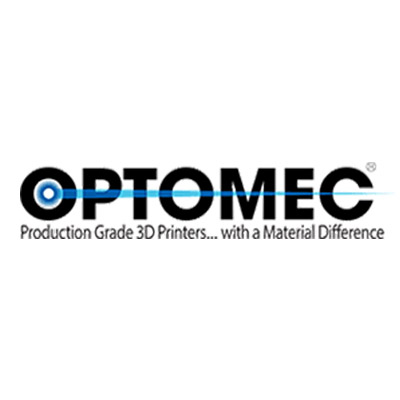

This project seeks to develop a knowledge base for Ti-6Al-4V powder that offers a matrix of vetted process parameters in order to obtain defect-free deposition in additive manufacturing utilizing the LENS® directed energy deposition (DED) process.
Problem
Optomec’s Laser Engineered Net Shaping (LENS®) additive manufacturing (AM) process is governed by a large number of process parameters (e.g., power, wavelength, spot size, energy flux distribution, scanning velocity, powder feed rate, substrate preheat, etc.). Various combinations of these parameters are being used today to produce AM components. There is currently no process parameter database, or knowledge base, to assist in obtaining defect-free AM deposition of Ti-6Al-4V utilizing the LENS powder bed directed energy deposition (DED) process. A knowledge base for Ti-6Al-4V would allow a process engineer to select from a matrix of vetted process parameter combinations which would minimize and potentially eliminate the trial and error approach to AM part process development.
Objective
The objective of this project was to develop a Ti-6Al-4V knowledge base in collaboration with Optomec, Applied Optimization, and the Pennsylvania State University – Applied Research Lab (ARL), offering a matrix of vetted process parameter combinations and best practices for LENS. This knowledge base would facilitate the production of defect-free LENS deposits.
Technical Approach
Applied Optimization collaborated with the ARL to leverage prior work performed on LENS systems at the ARL and used that information as a basis for simulations, which led to the improved understanding of bead profile measurements and refined focus on repair-related configurations.
The team conducted multiple AM builds of Ti-6Al-4V to develop known parameters that yielded optimal results and then captured those results in an AM knowledge base. In order to populate and complete the knowledge base, the team worked together to:
- Define process parameter ranges
- Simulate deposition with varied parameters under single-line, multi-line, and multi-layer conditions
- Validate deposition experimentally via designed experiments under single-line, multi-line, and multi-layer conditions
- Repeat as required to refine the correlation
Accomplishments
The knowledge base developed by the team for Ti-6Al-4V can be offered as a LENS system accessory package, expanding the use of LENS and other AM technologies for part build and repair applications.
Best practice recommendations related to parameter calibration, measurement, and correlation were developed and shared with other process and database development efforts.
A series of training sessions with Industrial Engineering Student Workforce & Educational Outreach Interns were held at America Makes. These sessions focused on setting up, running, and post-processing data from ParaGen simulations, which is the numerical simulation software that was used for this project. Applied Optimization also trained students on the use of ParaGen at its facility in Dayton, Ohio.
This project greatly benefited from collaboration with the America Makes “AM Laser Powder Feed – Reborn” project, which provided critical laser-based process parameters related to laser spot size measurement, laser power measurement, powder spot focus standoff, and powder spot size measurement. This data was used as input to the melt pool physics simulation.
Project Participants
Project Principal

Other Project Participants
- Applied Optimization
- Pennsylvania State University – Applied Research Lab
Public Participants
- U.S. Department of Defense
- National Science Foundation
- U.S. Department of Energy
